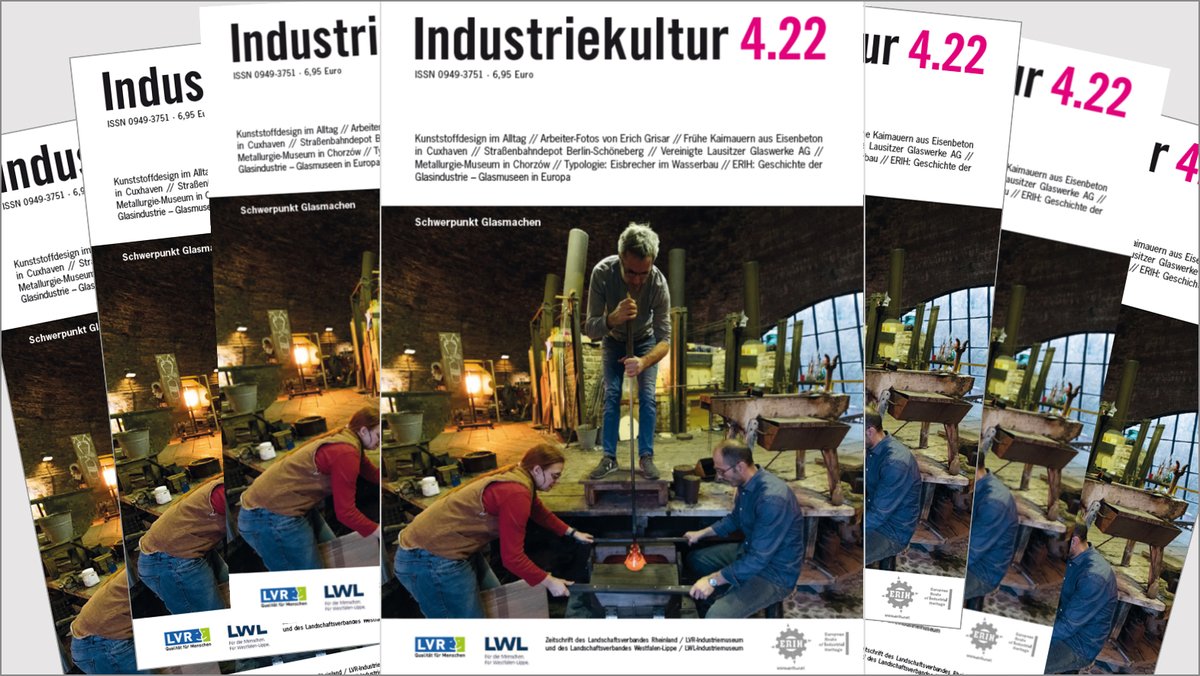
German Journal Industriekultur 4.22: Focus glassmaking – glass museums in Europe
Italy, the Czech Republic, Germany, France, Spain, Switzerland, Poland, Sweden, Norway, Finland, the United Kingdom: in many regions of Europe the glass industry used to play an important role - and in some cases still does. Consequently, a rich selection of glass museums worth visiting is presented by ERIH in the new issue of the journal Industriekultur with its focus on “Glassmaking".
All the sites described are included on the ERIH website, among them the two ERIH members Baruth Glassmaking Village, widely regarded as one of the best-preserved glassworks in Europe, and the Immenhausen Glass Museum. The very beginning of post-antique European glass production is marked by the Venetian island of Murano, from where - notwithstanding utmost secrecy - the art of glassmaking spread across the continent by the end of the 16th century.
One of the key criteria for establishing a glassmaking site is the availability of sufficient quantities of firewood for the furnaces - a precondition particularly fulfilled by Scandinavian countries. In Germany, glassmakers originally settled in low mountain woodlands: the Thuringian, Black and Bavarian Forests, the Fichtel Mountains, the Bohemian Forest, the Ore Mountains and the Riesengebirge (Krkonoše).
Still, each of the sites presented in the magazine has its distinctive features. The range of products is truly impressive: visitors marvel at precious tableware, at glass jewellery combined with synthetic materials and base metals, and at huge crystal glass chandeliers worth hundreds of thousands of euros. They are introduced to glass tiles and other modern wall and floor coverings made of glass, learn how French glassmakers mastered both the French and Industrial Revolutions by specialising in the luxury product of lead crystal, and witness England as a pioneer of early industrial mass production.
Some of the museums focus on the hard working conditions of glassblowers, smelters, glass cutters, gilders and painters. In addition, basket weavers and box makers were indispensable for break-proof distribution and export. The stokers, fuelling the glassworks' furnaces and supplying them with coal, had a particularly hard job to do - a task as vital as it was dirty. Despite all the differences, the featured sites have one thing in common: they illustrate an industry that was once dominated by highly specialised craftspeople, and bring their art back to life with live performances in many places.
ERIH article in 'Industriekultur': "Wie Transparenz in die Welt kam. Die Geschichte der Glasindustrie - Glasmuseen in Europa"

